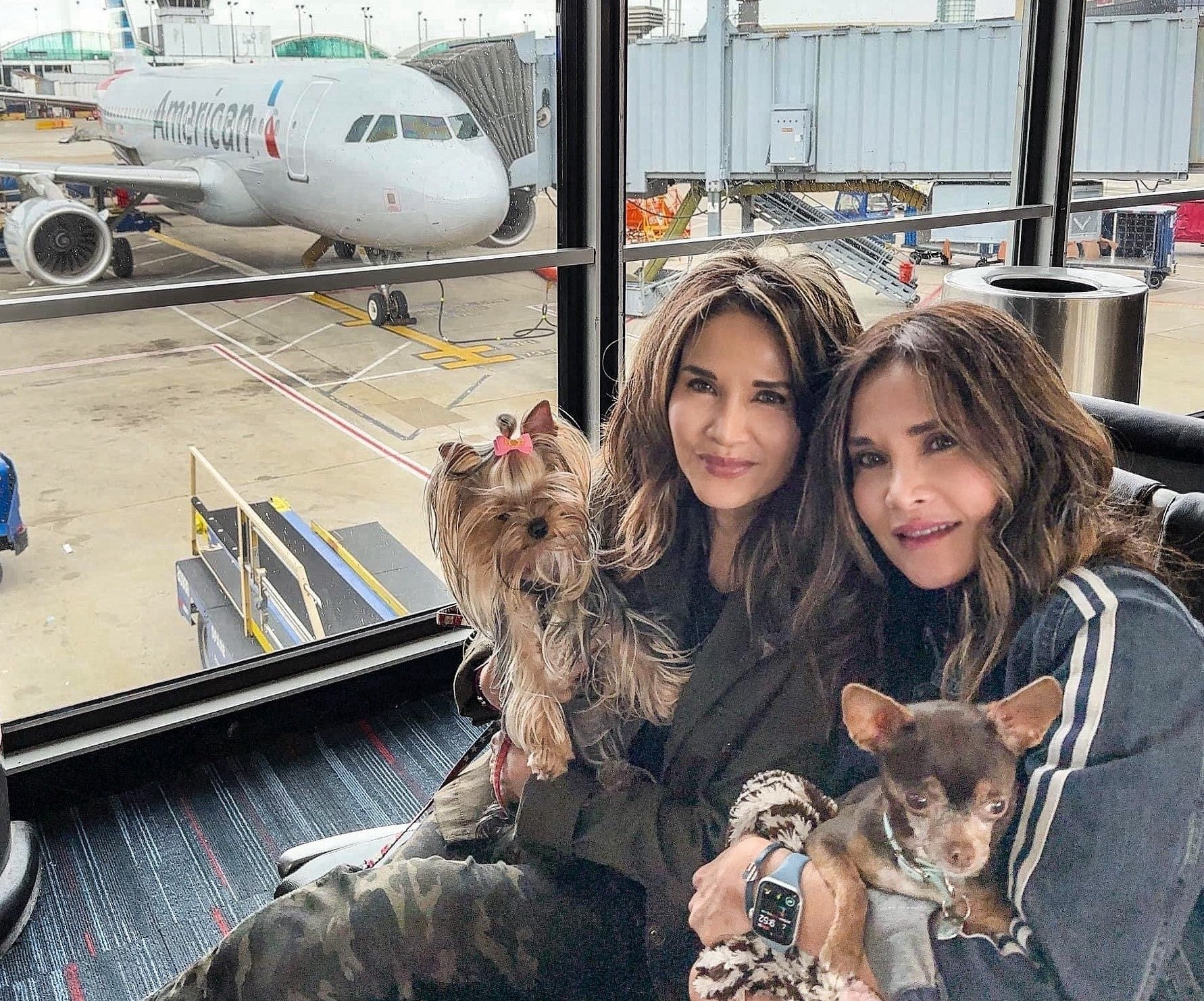Anxiety is a common problem in dogs that can significantly impact their quality of life. That's why it's important for pet parents to recognize the signs, understand the causes, and know how to manage the condition.
In this guide, we'll explore the different types of anxiety dogs can experience, the roles of nature and nurture in anxiety, and the potential downsides of oversocialization. Plus, we'll share our top tips for preventing and managing anxiety in dogs. So, if you're dealing with an anxious pup, keep on reading to learn how to help them live a happier, calmer life.

Types of Anxiety in Dogs
Anxiety in dogs can be broadly categorized into two main types: generalized and situational. In this section, we'll take a look at each type and some of the most common signs to watch out for.
Generalized Anxiety
Generalized anxiety in dogs is similar to generalized anxiety disorder (GAD) in humans. It involves excessive worrying, fear, or stress about everyday situations without a specific trigger. Here are some of the most common symptoms of this debilitating condition:
- Hypervigilance and a tendency to be easily startled. A common sign of generalized anxiety in dogs is hypervigilance, where they're constantly on high alert and easily startled by sudden movements or noises.
- Constant whining or barking. Dogs with generalized anxiety often vocalize excessively. This can be due to their constant state of stress or fear, seeking attention, or attempting to alert their owners to their discomfort.
- Pacing or restlessness. An anxious dog might exhibit repetitive behaviors such as pacing. This restlessness is a physical manifestation of their anxiety and can indicate that they're not comfortable in their environment.
- Destructive behavior. Dogs with anxiety may chew furniture, scratch walls, or engage in other destructive actions. This behavior is often a coping mechanism to deal with stress and can be harmful to both the dog and their surroundings.
- Hiding or avoidance. Anxious dogs may try to isolate themselves to escape from perceived threats and feel safer in a secluded spot.
- Trembling or shaking. Physical symptoms such as trembling or shaking are common in anxious dogs. These signs indicate a high level of distress and can be accompanied by other behaviors like hiding or avoidance.
- Changes in appetite and bathroom habits. Anxiety can also impact a dog's eating and bathroom habits, making them lose interest in food or have accidents indoors.
Situational Anxiety
Situational anxiety occurs when dogs react to specific events or environments. While the symptoms are often similar to generalized anxiety, the cause is more specific. Here are some common forms of situational anxiety in dogs:
- Separation Anxiety. This is one of the most well-known forms of situational anxiety in dogs, which is triggered by being left alone or separated from their owners. Symptoms can include excessive barking, destructive behavior, and bathroom accidents.
- Noise Phobia. Dogs with noise phobia experience intense fear and stress when exposed to loud or unfamiliar noises, such as fireworks, thunderstorms, or construction noise. They may try to hide, vocalize loudly, or even injure themselves in an attempt to escape the sound.
- Social Anxiety. Some dogs may also experience anxiety in social situations. This can manifest as fear or aggression towards people or other animals, making it challenging to take them on walks or bring them to public places.
- Travel Anxiety. Dogs that experience travel anxiety may become restless, vocalize excessively, or even vomit during car rides. This can make it difficult to take them on trips or to the vet.
- Environmental Anxiety. Changes to a dog's environment, such as moving to a new home or being in a new setting, can trigger anxiety. This type of anxiety is especially common in stressful environments like the vet's office or a crowded dog park. You may notice behaviors such as hiding, pacing, or avoidance in these situations.
The Role of Nature vs. Nurture in Anxiety
There are many potential causes of anxiety in dogs, and the debate between nature vs. nurture is ongoing. While some breeds may be predisposed to anxiety, environmental factors can also play a significant role.
Genetics can influence a dog's temperament and their likelihood of developing anxiety. For example, breeds that were originally bred for guarding or protection may have a higher tendency towards anxious behavior.
However, environmental factors can also trigger or exacerbate anxiety in dogs. A lack of early socialization, traumatic experiences, or living in a stressful environment can all contribute to the development of anxiety.
It's essential to consider both nature and nurture when addressing anxiety in dogs. While we can't change a dog's genetics, we can provide them with a supportive and positive environment that can help manage and prevent anxiety.
The Potential Downsides of Oversocializing Your Dog
Proper socialization is an essential part of a dog's development, especially during their critical socialization period (3-14 weeks old). It helps them become comfortable with new people, animals, and environments and can prevent the development of anxiety.
However, it's important to recognize that oversocialization can have the opposite effect and actually contribute to anxiety in dogs. When a dog is exposed to too many new experiences – especially those that are unpleasant or overwhelming – it can cause them to become fearful and anxious.
That's why it's so important to socialize your dog at a pace they're comfortable with and ensure that all interactions are positive. Be mindful of your dog's body language and signs of stress, and don't force them into situations that make them uncomfortable. By taking a gradual and positive approach to socialization, you can help prevent anxiety in your dog.
Tips for Managing and Preventing Anxiety
To manage and prevent anxiety in dogs, it's important to use a well-rounded approach. This involves understanding your dog’s personality, creating a supportive environment, and using various techniques to reduce stress. Here are our top recommendations for managing and preventing anxiety in dogs:
- Recognize signs and triggers. Keep an eye out for the signs and symptoms of anxiety we've highlighted in this post. This will help you understand your dog's triggers, so you can take steps to avoid or manage them.
- Stick to a consistent routine. Dogs thrive on routine, so try to keep their daily schedule as consistent as possible. This can help reduce stress and anxiety by providing predictability and structure.
- Create a safe and comfortable environment. Make sure your dog has a designated, quiet space where they can retreat to when feeling anxious. It should have their favorite toys, bedding, and anything else that makes them feel secure.
- Provide plenty of exercise and mental stimulation. Regular physical activity and mental stimulation can help reduce stress and anxiety in dogs. Make sure your dog is getting enough daily exercise, playtime, and mental enrichment through activities like puzzle toys or training.
- Practice positive reinforcement training. Positive reinforcement techniques can help improve a dog's confidence and teach them to cope with stressful situations effectively. By rewarding desired behaviors, you can help your dog build trust and feel more secure.
- Adapt training to your dog's personality. Every dog has a unique personality that can influence how they respond to training and stress management techniques. Conditional training, which adapts strategies based on individual behavior and reactions, can be highly effective. For example, a dog that's naturally timid may benefit from gradual exposure to new experiences with plenty of positive reinforcement, while a more confident dog might respond well to more diverse and frequent socialization opportunities.
- Seek professional help. If your dog's anxiety is severe and significantly impacts their quality of life, it's essential to seek help from a professional. A holistic veterinarian or certified dog behaviorist can provide you with personalized guidance and develop a treatment plan for your dog's specific needs.
Three of Our Favorite Calming Products
Calming products can be incredibly beneficial for dogs, especially those experiencing anxiety or stress due to changes in their environment, travel, or other factors. These products can help soothe your pup, making them feel more secure and comfortable. Here are three of our favorite calming solutions and why they stand out:
- CBD Dog Health Calm. This product is a favorite among pet parents thanks to its natural, soothing properties. Packed with high-quality CBD, it helps reduce anxiety and promotes relaxation without any psychoactive effects. The Calm tincture is easy to administer, and its effects are noticeable, providing a sense of peace for anxious pets. If you like CBD treats, consider Blanche’s CBD Edibles. Developed in collaboration with CBD Dog Health, they're made with our trusted CocoTherapy recipe for a vegan option your dog will love.
- Bach Rescue Remedy. Known for its holistic approach, Bach Rescue Remedy is a blend of five different flower essences that work together to calm and soothe pets. It’s a gentle, non-toxic option that can be used in various situations, from vet visits to thunderstorms. Just a few drops in your dog's water bowl or directly in their mouth can make a world of difference.
- Stress Stopper by Jackson Galaxy. Specifically designed to alleviate stress and anxiety, Stress Stopper is perfect for dogs who are anxious in both situational or generalized anxiety. This remedy uses a combination of herbal extracts to create a calming effect, helping your four-legged friend stay calm and composed during stressful situations.
In addition to these products, using familiar scents or toys can also be a great way to comfort your dog. Familiar objects carry your pet's scent and can make them feel more at ease in stressful situations. By incorporating these calming products and familiar items, you can help your dog navigate anxiety-inducing moments with greater ease.
Is Your Dog's Anxiety Impacting Their Quality of Life?
If you have an anxious dog, addressing the problem is vital for their overall wellbeing and quality of life. From recognizing the signs and triggers of anxiety to providing a comforting environment and utilizing calming products, there are many effective ways to manage and prevent anxiety in dogs.
Remember, while at-home strategies play an important role in managing anxiety, the guidance of a professional should never be overlooked. If your dog's anxiety persists or worsens, it's vital to consult with your vet. They can evaluate your dog's health, rule out any underlying medical conditions, and offer specialized treatment options. By combining home-based methods with professional advice, you can ensure your dog leads a happier, more relaxed life.
Want more information about relieving stress and anxiety in dogs? Check out our previous post.



